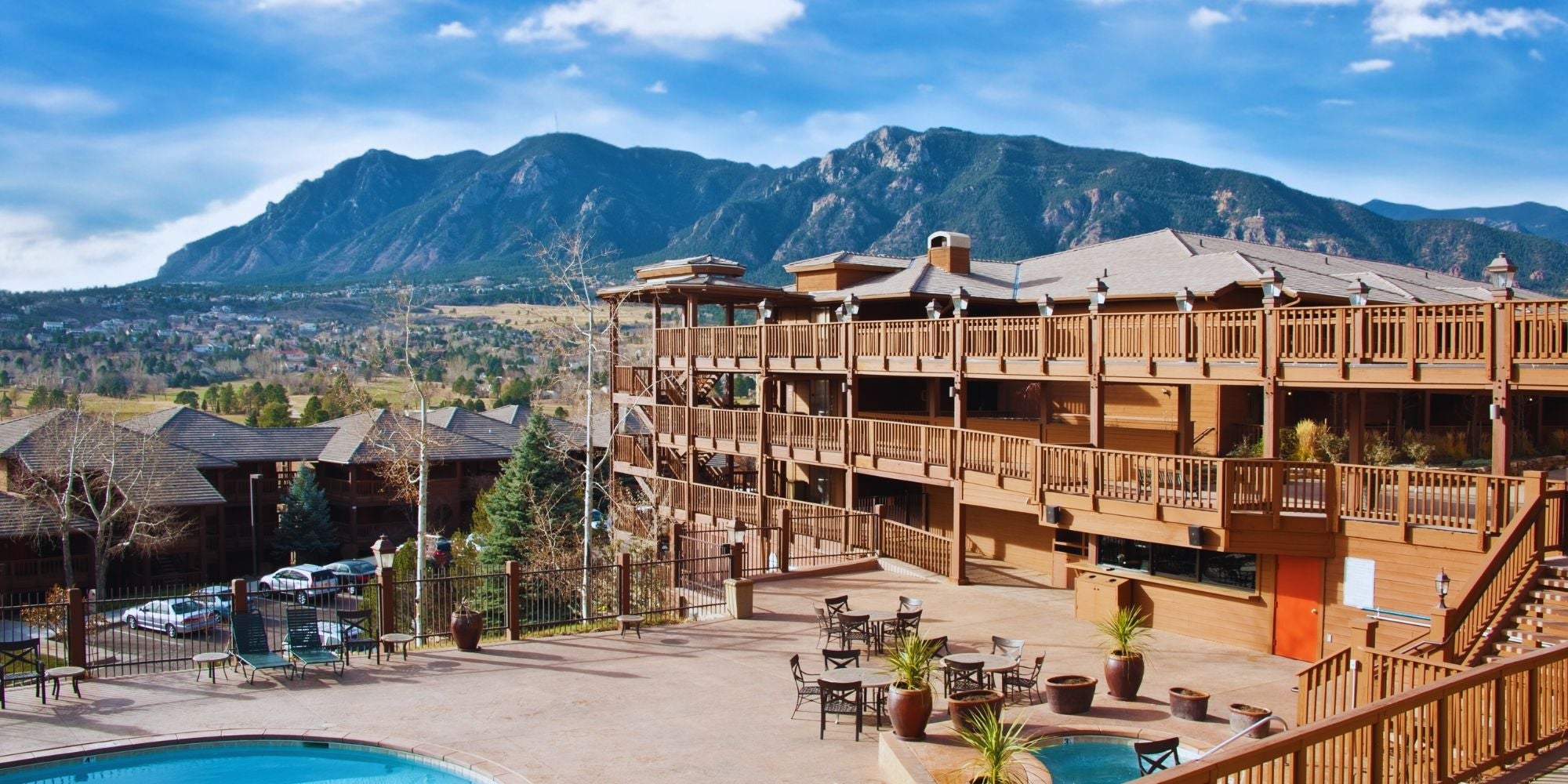
Cheyenne Mountain is a popular destination in Colorado Springs, but also brings the difficulty of altitude sickness. As a local Colorado company, we'll share with you everything you need to know about Cheyenne Mountain altitude and our proven tips to avoid Cheyenne Mountain altitude sickness.
Cheyenne Mountain altitude peaks at 9,570 feet above sea level. Even the base of the mountain in Colorado Springs is 6,035 feet feet high.
Cheyenne Mountain is one of the most famous mountains in Colorado and it's easy to see why. It's a massive mountain that towers over the city of Colorado Springs and gives you a stunning view of the city and the plains below. It's a very popular hiking and sight seeing destination.
Cheyenne Mountain is situated in the Front Range of the Rocky Mountains. At the base of the mountain includes two parks, the Cheyenne Mountain State Park and the North Cheyenne Cañon Park. Part of Cheyenne Mountain is in Pike National Forest, and oOther mountain peaks include Mount Baldy, Cameron's Cone, Mount Arthur, Mount Garfield, and Mount Rosa.
Nearby, Colorado Springs is loaded with other high altitude mountain destination including Pikes Peak (14115 feet in altitude), Manitou Springs Incline (8590 feet in altitude), and Seven Falls (7200 feet in altitude).
With these high altitudes, it's best to be prepared for the risk of altitude sickness.
At the base of Cheyenne Mountain, Cheyenne Mountain Resort sits slightly higher than Colorado Springs at 6,200 feet. Nestled in the foothills of the Rocky Mountains, Cheyenne Mountain Resort is a luxurious retreat that offers stunning views, top-notch amenities, and a peaceful escape from the hustle and bustle of everyday life. They sell our Zaca chewables for visitors dealing with altitude, lag from flying, or overall recovery.
Also at the mountain base is The Broadmoor, which is at an altitude almost identical to Cheyenne Mountain Resort at 6,230 feet above sea level. The Broadmoor is another luxurious and iconic getaway resort. Zaca chewables are also featured in the hotel's marketplaces.
Yes, you can get altitude sickness at Cheyenne Mountain.
Altitude sickness is considered to start at 5000 feet, in which Cheyenne Mountain well exceeds. At the peak of 9,570 ft, Cheyenne Mountain has approximately 6% less oxygen than sea level.⁹
With Cheyenne Mountain close to the elevation of Leadville Colorado, research shows between 40% to 50% of people exceeding 10,000 feet experience altitude sickness.¹⁰
Cheyenne Mountain altitude sickness is caused by spending time at high altitudes with air that contains less oxygen than it does at sea level.
This means your body has less oxygen available for normal functions — causing physiological and oxidative stress. In addition, Colorado's climate is very dry and high altitudes lead to increased respiration, which may cause dehydration and further complicate your issues.
The symptoms of Cheyenne Mountain altitude sickness may include:
Symptoms of Cheyenne Mountain altitude sickness usually come on within 6-24 upon high altitude arrival. Keep an eye out for any signs and follow our best tips to help avoid the mountain sickness.
If you're planning a trip to Cheyenne Mountain or any of its luxury resorts like The Broadmoor and Cheyenne Mountain Resort, you should be prepared for the altitude sickness that can occur at this lofty altitude.
As a local-based Colorado company, we have years of experience with high altitudes and we'll share with you our top tips to avoid Cheyenne Mountain altitude sickness.
Here's our top 6 tips to avoid Cheyenne Mountain altitude sickness.

Sold in Cheyenne Mountain Resort and The Broadmoor, Zaca is a chewable supplement to help you replenish and recover faster. Formulated with powerful antioxidants including glutathione, you can fuel your body to hydrate + revive. Founded in Colorado, these chewables are used by travelers, skiers, climbers, athletes, and locals alike. Conveniently made in a to-go packet, simply take 2-4 chewables per day or as needed. Try Zaca chewable supplement today and power your mountain adventure.
SOURCES:
1. Cheyenne Mountain Elevation
https://en.wikipedia.org/wiki/Cheyenne_Mountain
2. Colorado Springs Colorado Elevation
https://en.wikipedia.org/wiki/Colorado_Springs,_Colorado
3. Pikes Peak Elevation
https://en.wikipedia.org/wiki/Pikes_Peak
4. Manitou Incline Elevation
https://en.wikipedia.org/wiki/Manitou_Incline
5. Seven Falls Elevation
https://en.wikipedia.org/wiki/Seven_Falls
6. Cheyenne Mountain Resort Elevation
https://www.athletesinsight.com/cheyenne-mountain-resort-colorado-springs-full-review/
7. The Broadmoor Elevation
https://en.wikipedia.org/wiki/The_Broadmoor
8. High-altitude illness (including mountain sickness)
https://www.uptodate.com/contents/high-altitude-illness-including-mountain-sickness-beyond-the-basics
9. Oxygen Levels at Altitude
https://wildsafe.org/resources/ask-the-experts/altitude-safety-101/oxygen-levels/
10. Patient education: High-altitude illness (including mountain sickness)
https://www.uptodate.com/contents/high-altitude-illness-including-mountain-sickness-beyond-the-basics/print#
11. Why Do You Need to Drink a Lot of Water at a High Altitude?
https://www.livestrong.com/article/360485-how-to-train-for-high-altitude-hiking
12. Effects of Alcohol
https://www.ahajournals.org/doi/full/10.1161/01.HYP.29.6.1278#
13. Sleep: The Secret Ingredient of Injury Recovery
https://www.orthocarolina.com/media/sleep-the-secret-ingredient-of-injury-recovery
14. High altitude and oxidative stress
https://pubmed.ncbi.nlm.nih.gov/17482529/
15. Oxidative Stress and Diseases Associated with High-Altitude Exposure
https://www.ncbi.nlm.nih.gov/pmc/articles/PMC8868315/
16. Effect of high altitude (7,620 m) exposure on glutathione
https://pubmed.ncbi.nlm.nih.gov/11320641/
Copy the coupon code & use it at checkout